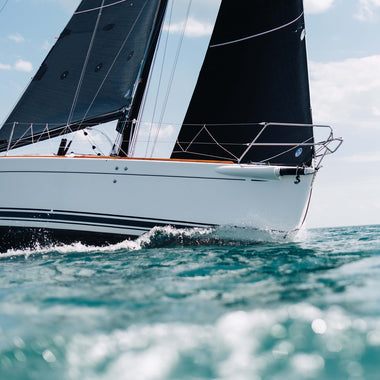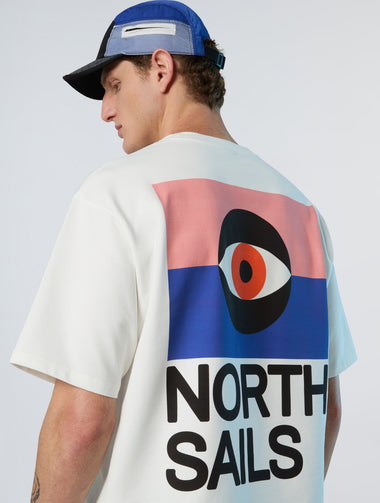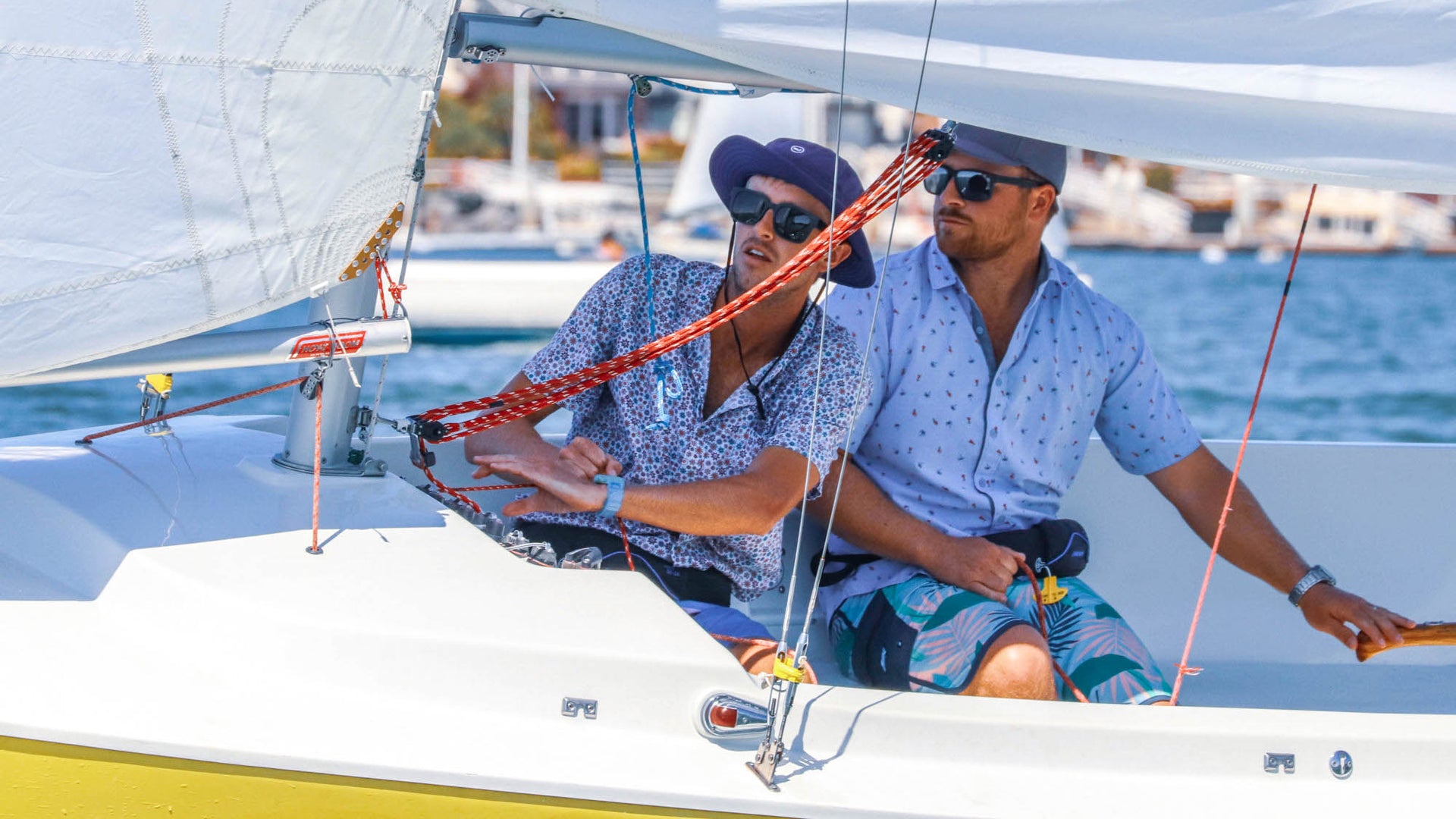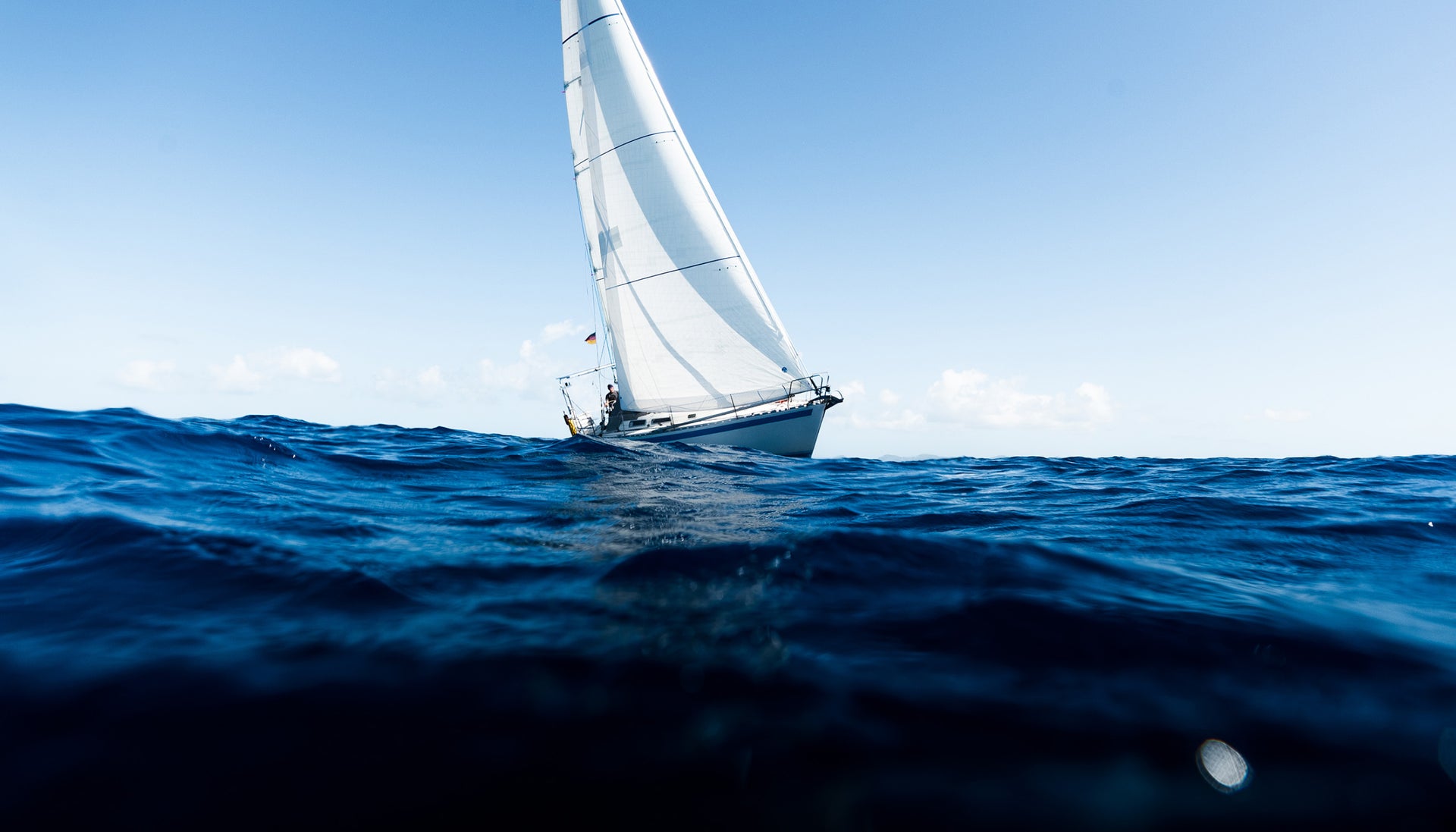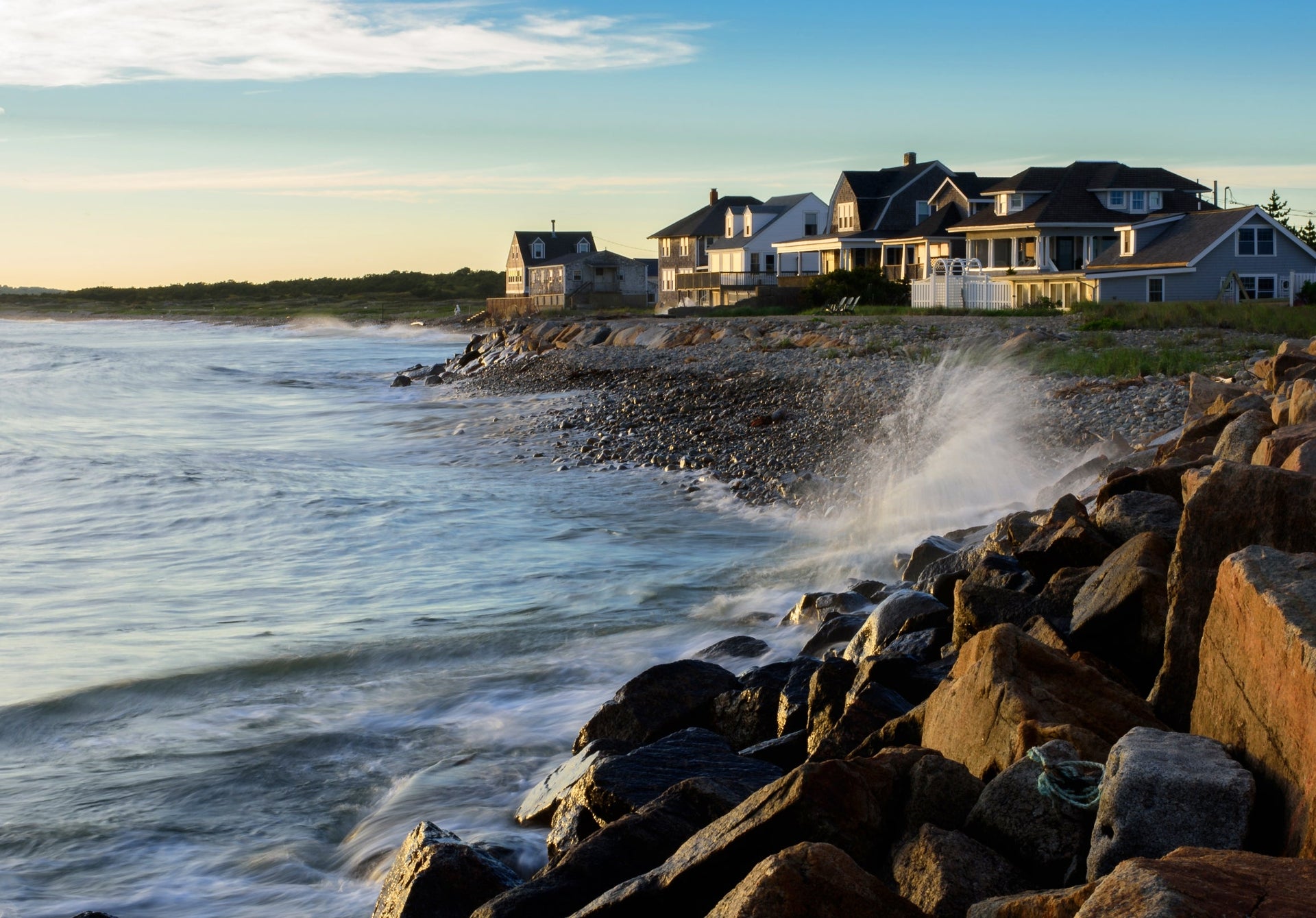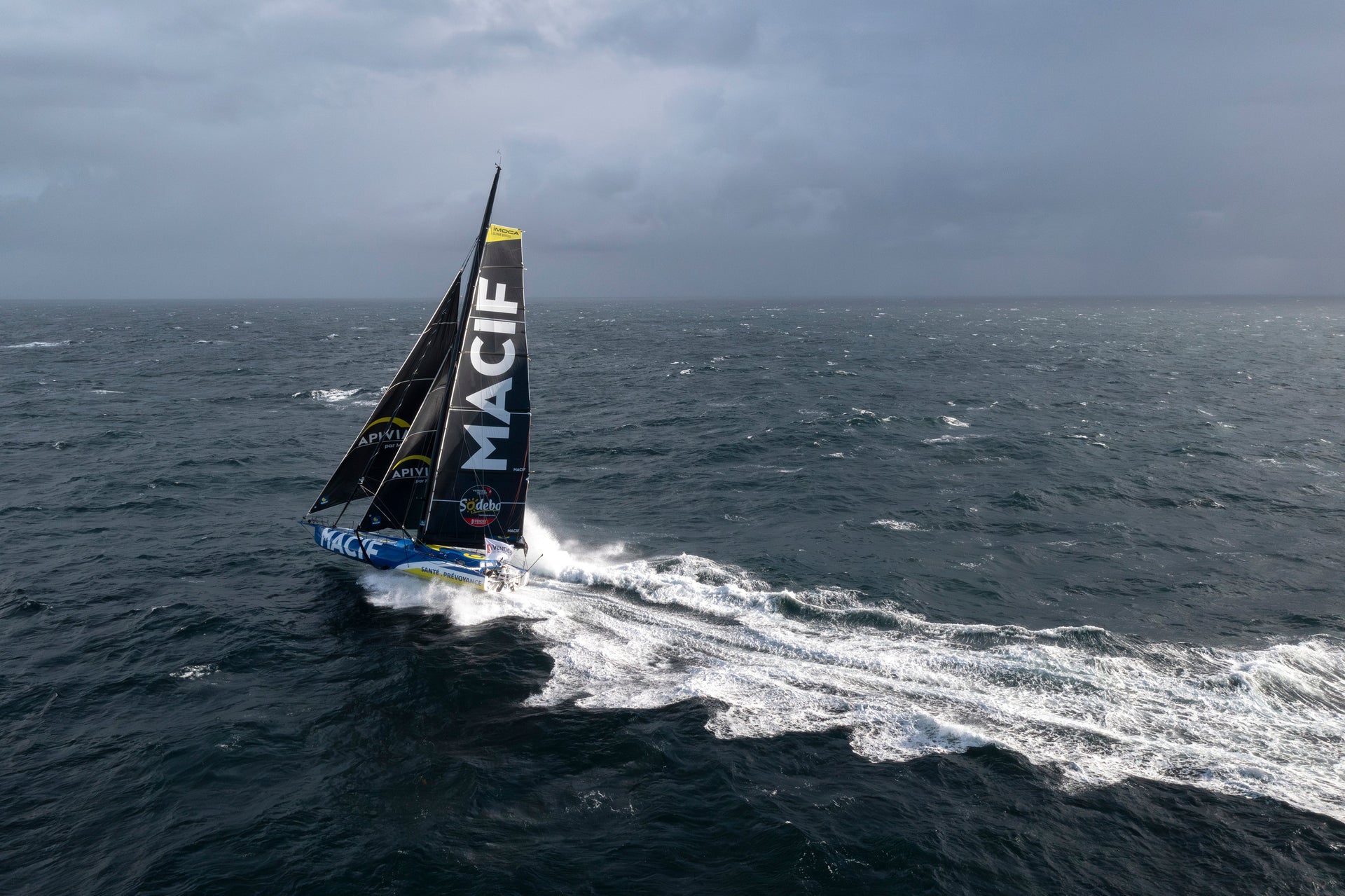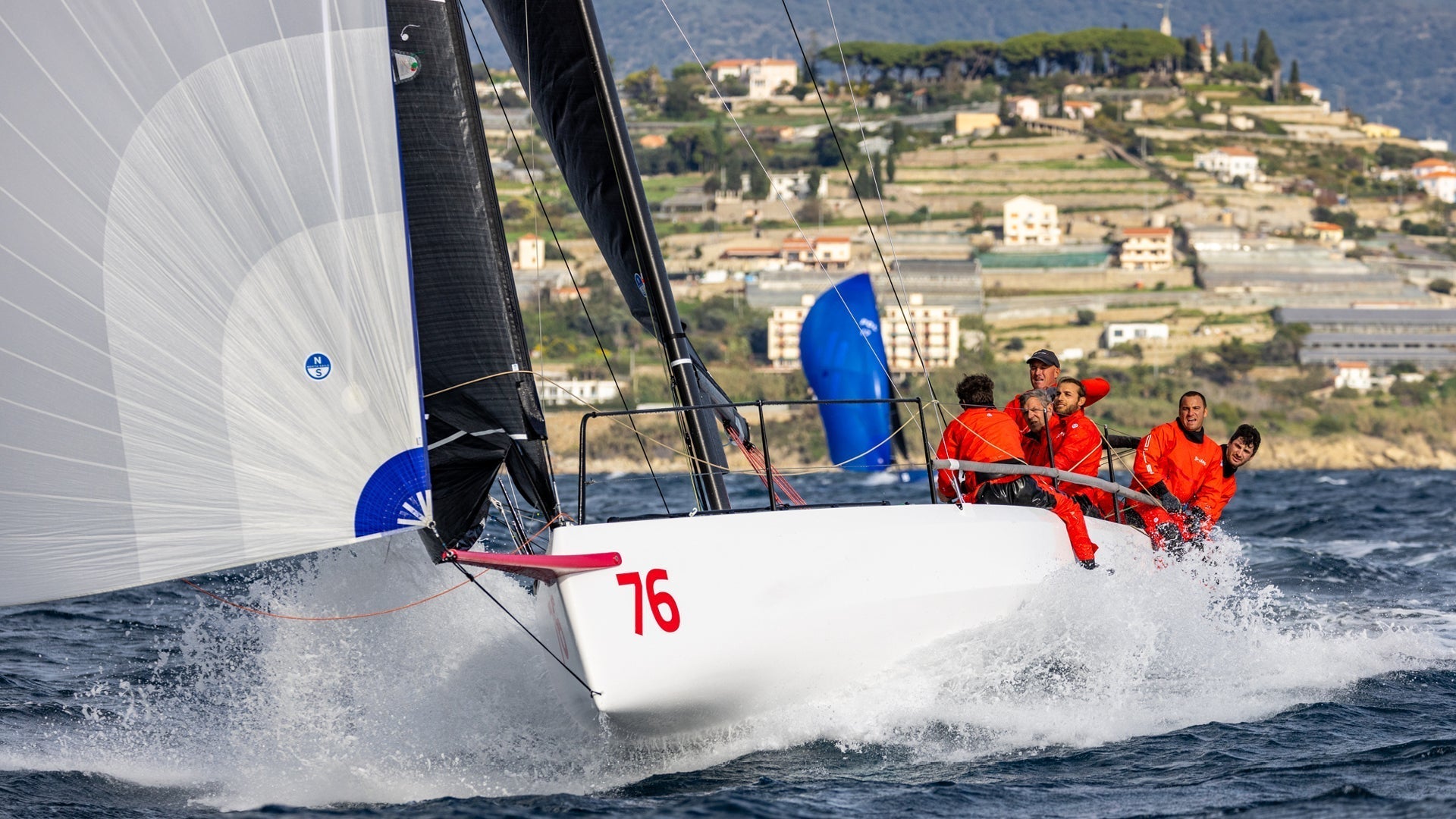IN DEPTH LOOK AT YOUNG POWERHOUSE ALEX CURTISS
IN DEPTH LOOK AT YOUNG POWERHOUSE ALEX CURTISS
His Top Tips & Tricks For Sailing
 A self-described “one design guy,” Alex Curtiss grew up in Chicago sailing Optis, 420s, and Lasers, as well as other one design and PHRF boats. In 2016, he graduated from St. Mary’s with an economics degree and two All-American awards, and moved to California to work as a sailmaker. He also sailed Etchells, J/70s, and TP52s; recent victories include the Etchells North Americans (as part of Scott Kaufman’s team) and the Prince of Wales U.S. Match Racing Championship.
Asked to name his favorite boat, Alex laughs. “Honestly, if bathtubs were racing each other and they were all similar, I’d be happy to go race bathtubs. I wouldn’t say that I have one particular class that is better than the rest. I just love the game.”
Although he helms when team racing dinghies, Alex really enjoys crewing. “I feel like I can help the team more if I’m organizing and coordinating the crew. It is a little bit more fun and a little bit more of a challenge, just because there’s more moving parts.”
When not sailing, Alex loves to surf and play golf. Looking ahead, he’s excited to be part of North Sails. “There’s so much tradition, with great roots here in southern California. Building on everything that the team has already created, and being part of a winning and successful culture—that is what I’m most excited about. North has always been well known for its one design sails, and now I’m part of a rich history
A self-described “one design guy,” Alex Curtiss grew up in Chicago sailing Optis, 420s, and Lasers, as well as other one design and PHRF boats. In 2016, he graduated from St. Mary’s with an economics degree and two All-American awards, and moved to California to work as a sailmaker. He also sailed Etchells, J/70s, and TP52s; recent victories include the Etchells North Americans (as part of Scott Kaufman’s team) and the Prince of Wales U.S. Match Racing Championship.
Asked to name his favorite boat, Alex laughs. “Honestly, if bathtubs were racing each other and they were all similar, I’d be happy to go race bathtubs. I wouldn’t say that I have one particular class that is better than the rest. I just love the game.”
Although he helms when team racing dinghies, Alex really enjoys crewing. “I feel like I can help the team more if I’m organizing and coordinating the crew. It is a little bit more fun and a little bit more of a challenge, just because there’s more moving parts.”
When not sailing, Alex loves to surf and play golf. Looking ahead, he’s excited to be part of North Sails. “There’s so much tradition, with great roots here in southern California. Building on everything that the team has already created, and being part of a winning and successful culture—that is what I’m most excited about. North has always been well known for its one design sails, and now I’m part of a rich history
Tell us about Champions of Champions. How does it feel to take first place honors as a representative of the Lehman 12 class?
The CofC’s this year were literally in my backyard which was something cool to be apart of. Our local Lehman 12 class is definitely on the map now. It had been quite a while since our class was nationally recognized. We are very proud of that. It was also very cool to share the experience and crew for my best bro Jake LaDow. He and I do a lot of sailing together in a wide variety of different classes and disciplines. It just felt like another weekend hanging out.What are your top 3 tips for someone just getting involved in the class?
Get comfortable with starting in close quarters. This is applicable to Harbor 20’s especially. Traditional starting techniques can often lead to not so ideal starts. Understanding what your time and distance is will help you and your crew know when to set up, then knowing how long it takes to accelerate, and then starting at full speed at go. These three things are super important to getting a jump on the guys around you. Be scared of going slow. Never let your boat get to pinchy, I call it “keeping the rope on”, but try and be full speed all of the time. Understand what the longer breeze phase is. Especially in SoCal, its all about the phase of the breeze. Whether you are sailing sabots, J70’s, or TP 52’s. This is an important part of scoring well in every race.
How did you get involved in sailing, especially One Design sailing?
I got involved with One Design sailing at a very early age. I grew up sailing Optimist’, Club 420’s and lasers. I was lucky to have very supportive parents and siblings who pushed me to do as much racing as I possibly could. My dad had several Offshore OD boats growing up too. My first job was the backstay adjuster. I had to pump the backstay around leeward marks, and let it off at the weather mark. Often times my brother in law was the tactician, he taught me a lot about basic tactics and was very patient with me when I asked dumb questions.What keeps you coming back, even after a bad day on the water?
I would say just the curiosity I have with sailing keeps me coming back. There are so many variables in any boat you get in on at a given time. Everytime that I think I am a little burnt out, I go for a harbor cruise here in Newport Beach, have a few beers with friends and it makes me realize just how much I love the sport of sailing, and why I do what I do.What stands out in your mind as the biggest learning curve in sailing?
Just staying open minded. Especially working in the industry, it is easy to get complacent with what you are comfortable with. I really rely and question my mentors, recently Eric Doyle, to help just expand my general knowledge of the sport. I sail in so many different boats and in different disciplines, its just really important to keep pushing myself to learn more, ask questions, and then try and apply them to my sailing.Looking ahead, how does one prepare for offshore races, such as the Transpac?
Preparation has so many different aspects to it. The first thing people need to do is to make sure their boats and sails are structurally sound. I would encourage anyone who is considering the Transpac to consult their local sailmaker and boat builder. Last go around, there were several people who had their rudder posts crack or break entirely. That would be where I would start. From there making sure you have the right crew. Remember you are spending anywhere from 7-12 days on a boat with these people. You need to trust them and probably get a long with these people. Finally, go spend some time offshore, and get some experience doing sail changes, watch systems, and make sure all of the sails look good and are ready for serious use.

